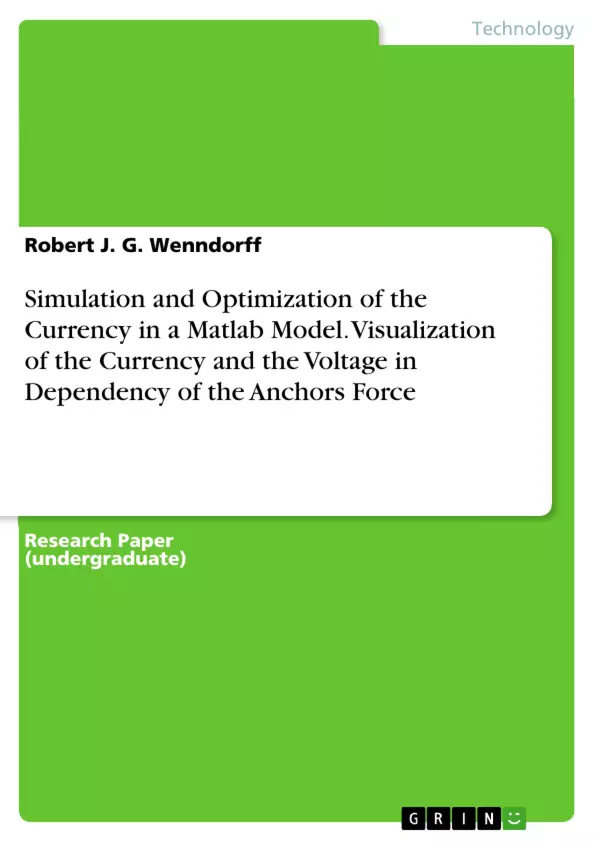The present work is about the design of a linear magnet for an artificial heart in the “Konstruktionsseminar Summer term 2014” at the University of Applied Science HS Pforzheim. This work is one part of three different topics about the heart in the course “electric machines”. It covers the simulation and optimization of the engine from an artificial heart using a linear magnet or further named solenoid. In the winter term 2013, the last semester, a group of students already designed a virtual prototype of the heart and the magnet. But they could not meet the weight requirements therefore the goal and the focus in the “Konstruktionsseminar Summer term 2014” was to lower the total weight. However, no analyses had been made of the movement of the anchor and pushing the blood into the chamber. To lower the weight and to raise the power of the solenoid by an exchange of the material, the whole system will be more dynamic as before. To get an optimum of a low weight plus having a dynamic system, which can be controlled by changing the voltage and therefore the currency, the system is getting into an idly condition.
Inhaltsverzeichnis (Table of Contents)
- Introduction
- Description of the task
- Initial situation
- State of the Art
- Magnetic force FM
- Duty cycle
- Inner resistance of the coil
- Derivation of MSDS - Mass-Spring-Damper-System
- The spring stiffness
- The damper stiffness
- The anchors mass
- Airgap
- From FEMM into a Simulink model
- FEMM
- FEMM Files
- F(delta, I)
- F(delta, L)
- Coil Calculations
- Creating the Matlab Simulink model
- Electric part of the Simulink model
- Mechanical part of the Simulink model
- Use of the system
- Conclusion
- Table of Figures
- References
- Appendix
Zielsetzung und Themenschwerpunkte (Objectives and Key Themes)
This paper aims to analyze and simulate the behavior of an artificial heart using a MATLAB Simulink model. The primary objective is to visualize the currency and voltage in relation to the anchor's movement within a direct current magnet. The model aims to optimize the design of the artificial heart by minimizing weight and maximizing force while controlling the movement of the anchor.
- Optimization of an artificial heart design
- Simulation of a mass-spring-damper system
- Control of anchor movement using voltage regulation
- Analysis of currency and voltage behavior in relation to anchor force
- Evaluation of system performance and potential limitations
Zusammenfassung der Kapitel (Chapter Summaries)
- Introduction: Provides an overview of the artificial heart project and its goals, highlighting the need for optimization.
- Description of the task: Outlines the specific task of simulating the currency and voltage in the artificial heart model.
- Initial situation: Describes the initial setup of the system, including the use of a solenoid for anchor movement and the desired control of the anchor's motion within the airgap.
- State of the Art: Discusses relevant concepts and theories including magnetic force, duty cycle, inner resistance of the coil, and the derivation of the mass-spring-damper system. This chapter delves into the theoretical basis for the simulation.
- From FEMM into a Simulink model: Explains the process of transferring data from the finite element method (FEMM) software into the MATLAB Simulink model, providing a detailed explanation of the data transfer process.
- Creating the Matlab Simulink model: Details the creation of the MATLAB Simulink model, focusing on the electric and mechanical components of the system.
- Electric part of the Simulink model: Explains the electrical aspects of the model, including the voltage regulation and its impact on the system's behavior.
- Mechanical part of the Simulink model: Describes the mechanical part of the model, focusing on the anchor's movement within the airgap and the influence of the mass-spring-damper system.
- Use of the system: Explores potential applications and uses for the simulated system, highlighting the practical implications of the research.
Schlüsselwörter (Keywords)
The paper focuses on the simulation of a direct current magnet, particularly its application to artificial heart development. Key keywords include artificial heart, solenoid, anchor movement, currency, voltage, airgap, mass-spring-damper system, MATLAB Simulink, FEMM, and optimization. The paper explores the relationship between voltage regulation, currency, and the motion of the anchor within the airgap, evaluating the system's performance and potential limitations.
- Quote paper
- Robert J. G. Wenndorff (Author), 2014, Simulation and Optimization of the Currency in a Matlab Model. Visualization of the Currency and the Voltage in Dependency of the Anchors Force, Munich, GRIN Verlag, https://www.hausarbeiten.de/document/386648


